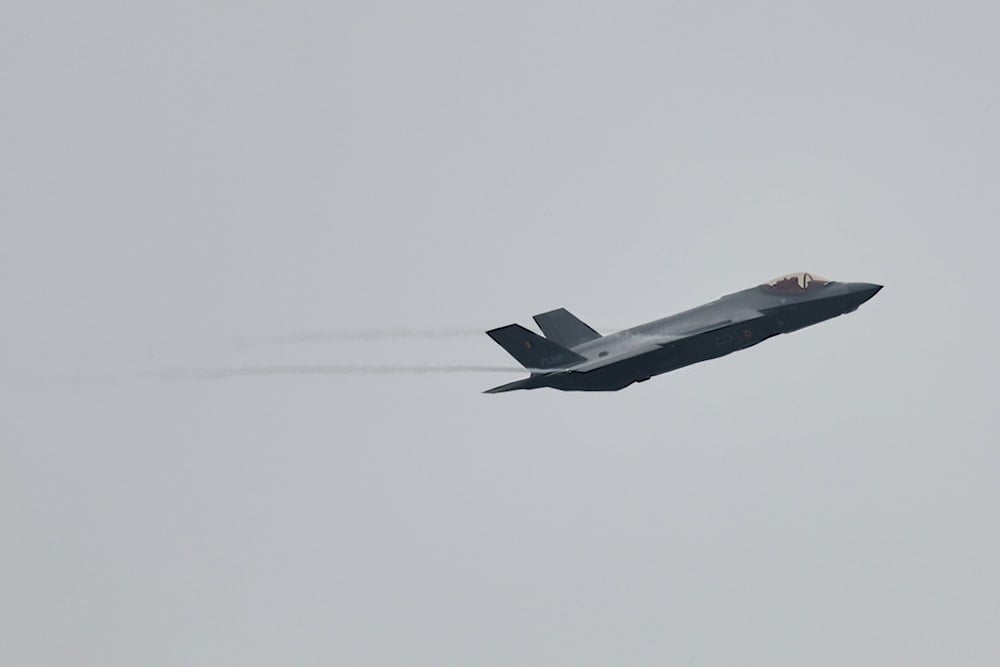Canada reconsiders F-35 purchase after study shows Gripen 'far behind'
Canada is reassessing its multibillion-dollar F-35 purchase after a leaked 2021 evaluation showed the US jet vastly outperforming Sweden's Gripen.
-

An F-35A Lightning II flys by on the occassion of the first F-35 fighter jets arriving at the Florennes Airbase in Florennes, Belgium, Monday, Oct. 13, 2025 (AP Photo/Geert Vanden Wijngaert)
A newly revealed government assessment has reignited Canada’s fighter jet controversy, showing that the US-made F-35 far outperformed Sweden’s Gripen in a detailed 2021 evaluation conducted by the Department of National Defense (DND), according to documents obtained by Radio-Canada.
The comparative study placed the F-35 at 95%, amounting to 57.1 out of 60 points, for its overall military and technical performance. Saab’s Gripen, by contrast, earned 33%, or 19.7 out of 60, and fell short in four of the five major categories assessed. The report noted deficiencies in areas such as mission performance, upgradability, technical specifications, and capability delivery. Former Royal Canadian Air Force officials have since pointed to these gaps as evidence that introducing a second aircraft type would bring added training, logistics, and maintenance burdens to an already stretched defense budget.
Procurement Standoff
The disclosure comes at a delicate moment for Ottawa. Just months into office, Prime Minister Mark Carney has paused the multibillion-dollar F-35 procurement, even though Canada has already financed 16 of the 88 aircraft included in the 27.7 billion Canadian dollar agreement with the United States and Lockheed Martin. His decision follows a period of heightened friction with Washington, with some media outlets reporting that Carney worries about possible "retaliation" from US President Donald Trump if Ottawa walks away from the remaining order.
The pause also coincides with a broader political push from Stockholm. During a recent state visit, Swedish officials and Saab executives outlined an ambitious proposal that would not only assemble Gripen E or F jets in Canada, but establish a full manufacturing and R&D hub tied to thousands of promised jobs. The pitch reflects mounting global demand for the aircraft, with Swedish officials suggesting that a Canadian line could also help address future exports, including Kiev’s declared interest in up to 150 Gripen units.
Meanwhile, Saab is attempting to revive its bid. Speaking to The Globe and Mail on November 13, Saab CEO Micael Johansson confirmed that the company is in talks with the federal government and Bombardier on a plan to manufacture Gripen jets under license in Canada. Such a partnership, Johansson said, would expand Saab’s global production capacity at a time of growing international demand.
Strategic Crossroads
That proposal has stirred political interest in Ottawa. On November 19, Industry Minister Mélanie Joly stated that Canada is "very much interested" in the Gripen, while stressing the need for further technical and financial clarity before any commitments can be made. Defense Minister David McGuinty has also maintained that the DND review of the F-35 purchase is still underway.
But the choice is not merely industrial. The F-35 remains Canada’s anchor for fifth-generation airpower: a low-observable aircraft equipped with advanced sensors, secure data links, and a combat radius suited to NORAD and Arctic defense requirements. Its ability to fuse battlefield information and operate as a networked node within NATO is central to arguments for keeping the full 88-jet fleet.
The Gripen, by contrast, follows a different design logic: optimized for rapid turnaround, dispersed basing, and ease of maintenance. Saab has recently highlighted emerging upgrades, including AI-enabled mission support demonstrated under "Project Beyond." Advocates for a mixed fleet argue that the Gripen could multiply forward operating capacity and bolster air policing at a lower cost, even if it cannot replicate the F-35’s stealth and sensor-fusion advantages.
A shift toward Saab’s platform could mark a historic break from Canada’s long-standing defense-industrial alignment with the United States. It could also exacerbate ongoing trade tensions, given Washington’s irritation over renegotiated contracts and recent disputes over border policy and economic measures. Opening the door to the Gripen would instead deepen ties with Sweden, now a NATO member, and offer new space for Canada’s aerospace sector, especially for Bombardier, which already partners with Saab on surveillance platforms.
The stakes are therefore both military and diplomatic, with Ottawa now facing a choice that touches on national security, industrial development, alliance management, and the future of its strategic relationship with the United States.
Read more: Canada reviews arms exports to 'Israel' via US loophole amid Gaza war

 4 Min Read
4 Min Read








